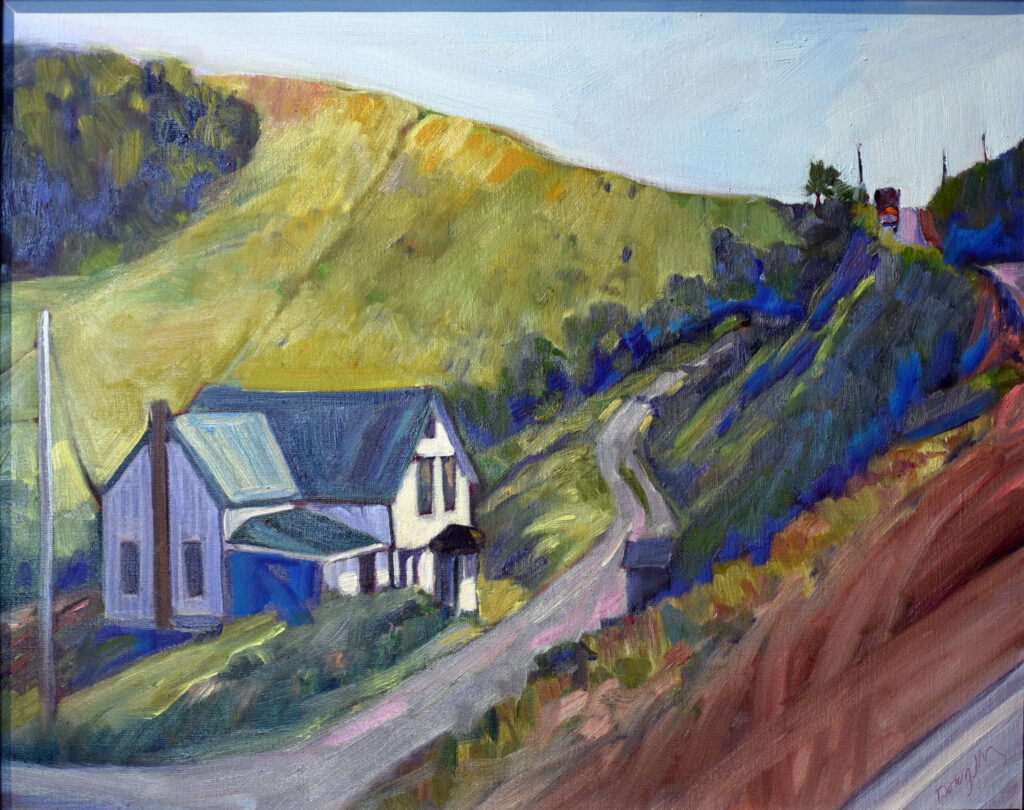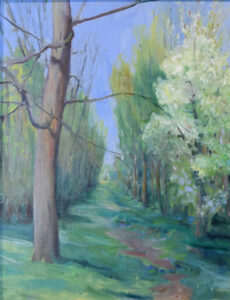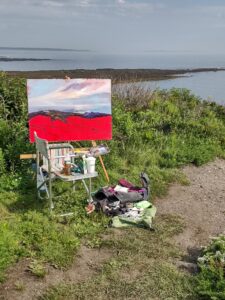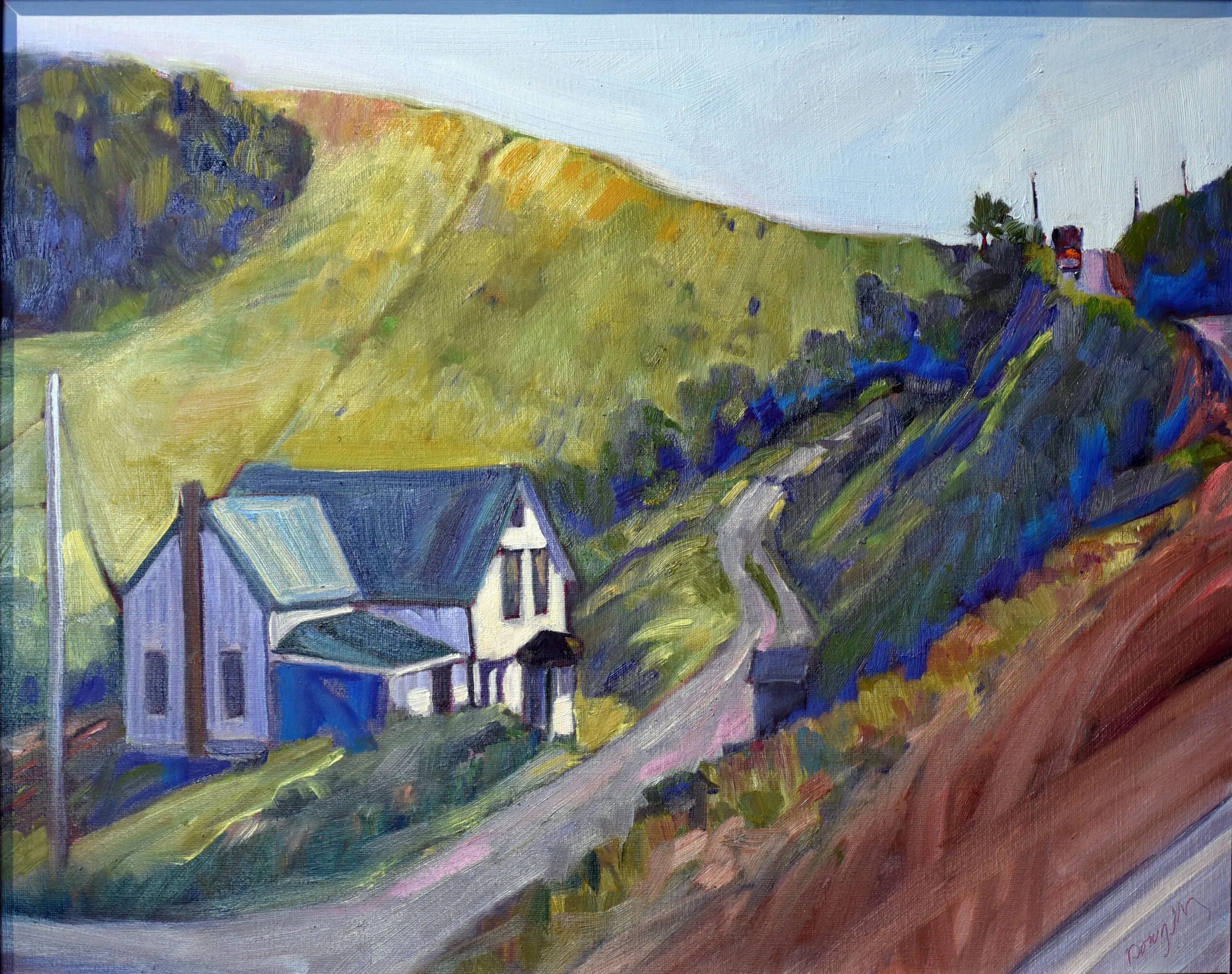
Rules are meant to be learned—and then, after mastery, some can be broken.
A few weeks ago, my plein air class was working on Knox Street in Thomaston. Eric Jacobsen was painting in his own yard nearby. A student asked me the secret to painting bigger canvases. “Bigger brushes,” I told him. “Walk over there and see how Eric’s doing it.” I know Eric’s a generous soul and wouldn’t begrudge him the peek over his shoulder.
It turns out that Eric was limning in big, fat, audacious peonies with a delicate #8 brush. “It thinks like a big brush,” he explained. Even as I smiled at his infectious humor, I understood his point. He wasn’t making sweet little marks with it, but sweeping gestures.

Most plein air painters create a plan before they start. Depending on the complexity of the painting, this sketch can be either simple or quite detailed; however, it lays out the composition as a series of values. Ken DeWaard, on the other hand, starts with a series of charcoal hash marks across his canvas. Natalia Andreeva is another painter who omits the sketch stage. She believes it makes for fresher work.
Everyone ‘knows’ that watercolor is painted light-to-dark, but I’ve watched Poppy Balser paint in a wall of black spruces and then wash the sky right over it, giving the whole composition a trembling northern glow.
Dark-to-light is one of the principle rules for oil painting, and for good reason; it is very difficult to make corrections over tints in alla prima painting, even when you’ve carefully wiped out your mistake. It’s a rule I often break. Having laid in my darks, I sometimes place the mosaic of lightest lights against it to see how the composition reads. I can do this because I work from a careful sketch. Ken DeWaard has jokingly called my technique ‘paint-by-numbers’.

I teach a protocol that takes students through design, preparation, and execution. I tell my students that what I’m teaching are the most accepted practices in painting, but they’re not the only way to do things—people have broken painting rules since the beginning of time.
Sometimes that ends very badly, as with the canvases of Albert Pinkham Ryder. He was an inveterate tinkerer, working canvases for a decade or longer, applying sequential layers of paint, resin and varnish. He paid no attention to the drying speeds of his materials, and tossed in things like candle wax, asphalt, and non-siccative oils. These weird techniques gave his paintings unparalleled luminosity that dazzled his contemporaries. Sadly, the results were unstable. His paintings darkened, cracked, and sometimes completely disintegrated.
Ryder ignored two fundamental rules of painting: fat over lean, and don’t add weird stuff to your paints. (The latter isn’t really a painting rule but plain common sense.) But, aside from the fundamentals, other rules can be broken, or at least modified. They’re meant to give the artist a good working method and a way of seeing quickly. If, as an artist develops, a particular step becomes a hindrance, it makes sense to get rid of it. But that’s only appropriate after mastering the process in the first place.

